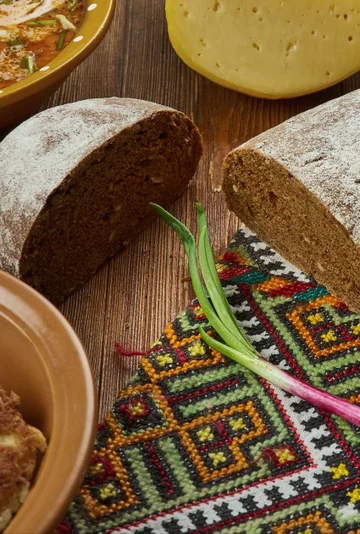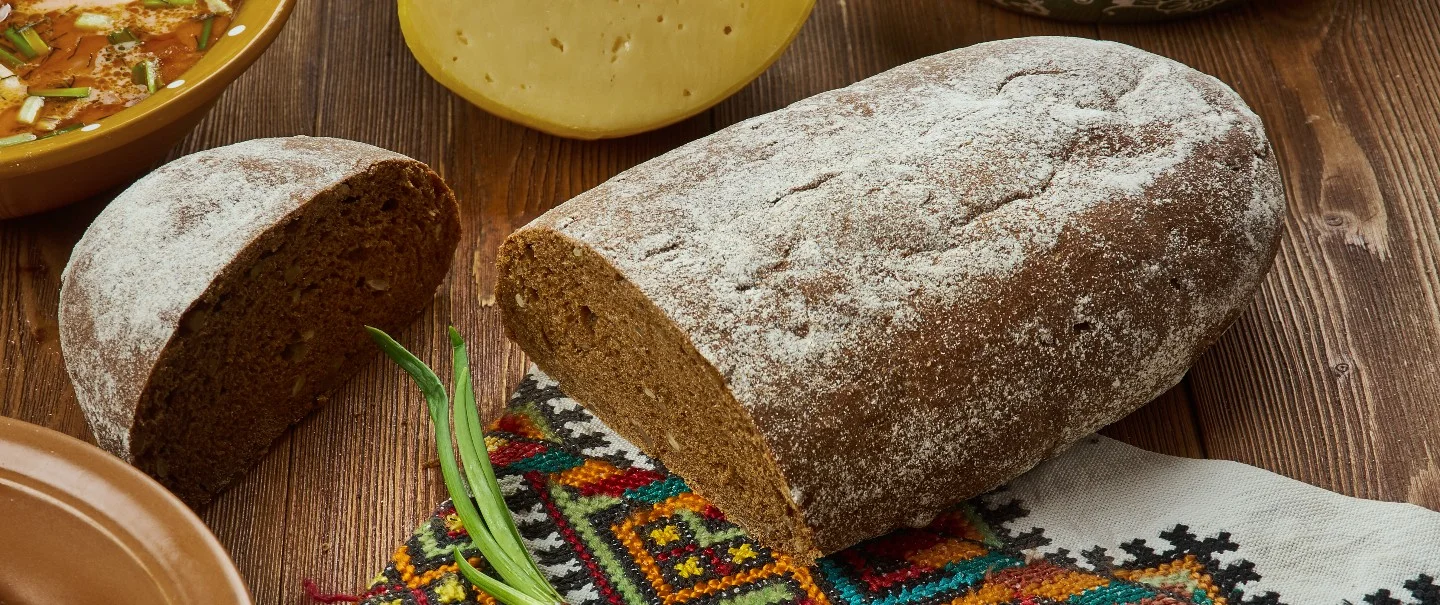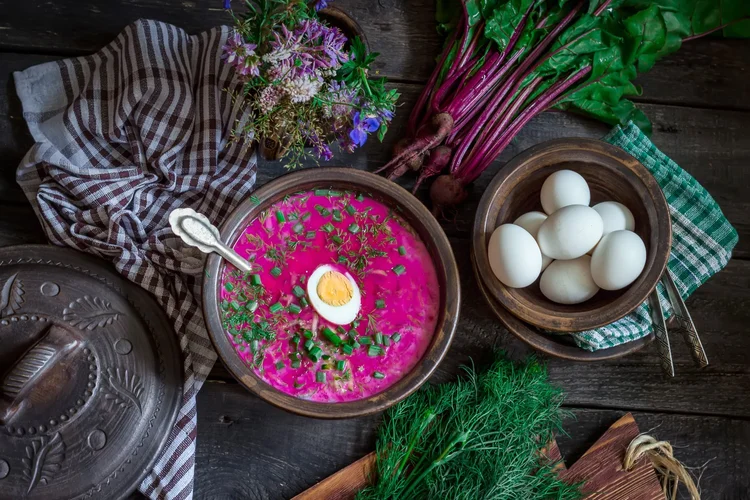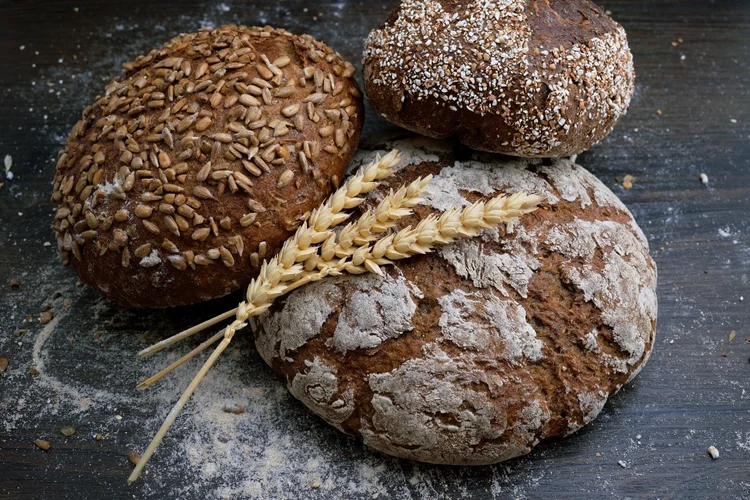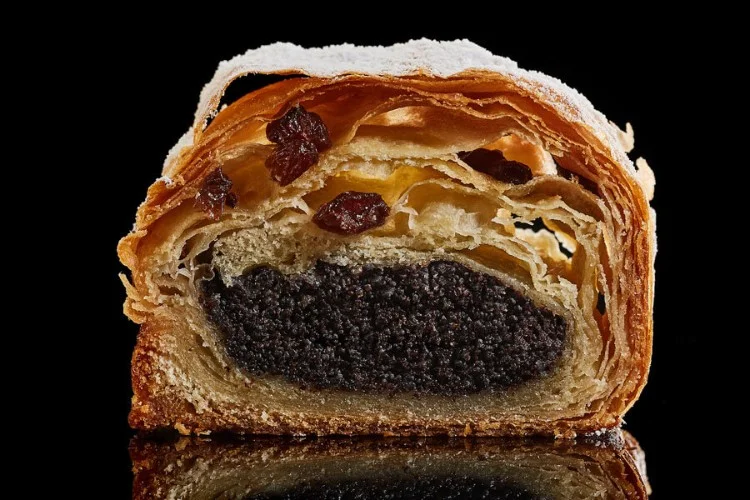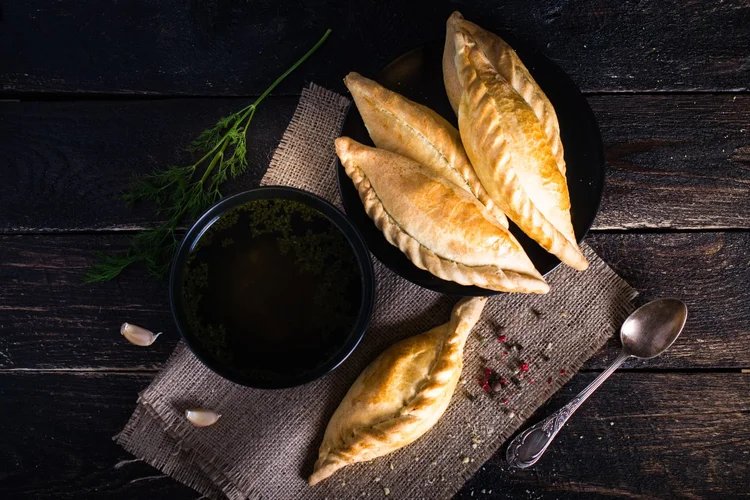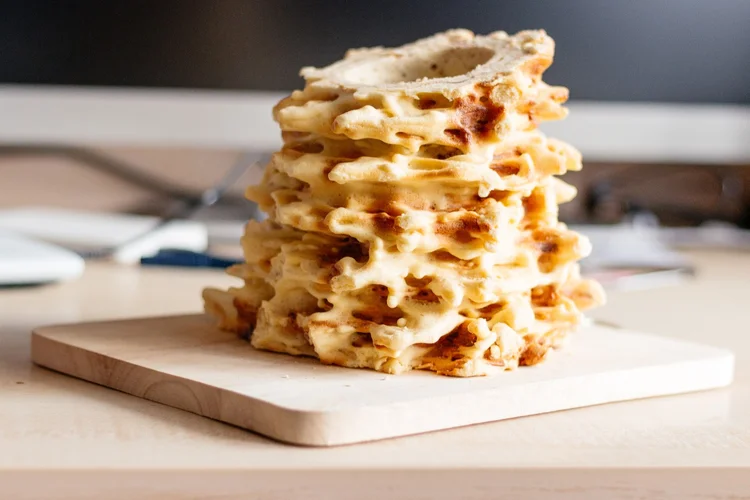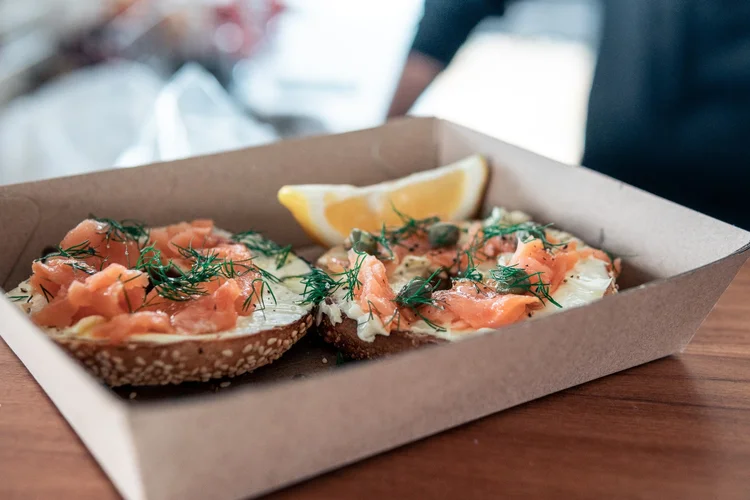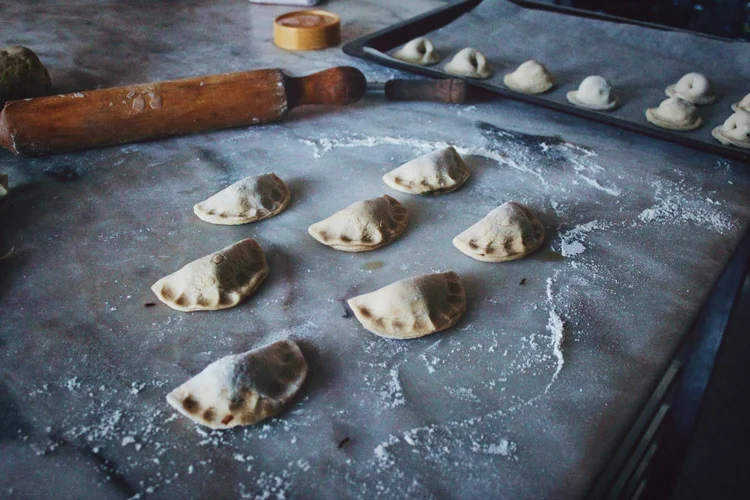Lithuania’s gastronomic culture is curious and collaborative, which mean we’ve adapted all sorts of flavours from neighbouring countries and used them to improve our own. Some of these recipes came to Lithuania in the 14th and 15th centuries from the Tatars, Karaites and Jews who settled in the country. Influences also came from the Byzantine, Greek, and Ottoman empires, as well as Italian, German, and French culinary traditions. Let us present ten foods that best represent Vilnius.
Šaltibarščiai (Cold Beet Soup)
Anyone who dives into the tasty world of Lithuanian cuisine knows about this pink soup. It’s hard not to! However, sometimes people are wary of trying it because of the intense colour. The basis for this soup is beets with kefir, which mix together to create the vivid pink colour. A hardboiled egg, cucumbers, dill, and green onions are also added to the dish. Most importantly, this soup is eaten cold, which is why it is traditionally a summer staple.
Cepelinai
If you were to ask a local what traditional Lithuanian dish is the most popular, almost everyone would say cepelinai. These zeppelin-shaped grated and stuffed potato dumplings are such an integral part of Lithuania’s cuisine that no one dares argue the extent to which it belongs to our culinary heritage. Nevertheless, cepelinai were first made here just a little more than a century ago. Both their idea and the inspiration for their shape came from Germany.
Bread
For Lithuanians living abroad, rye black bread is one of the clearest symbols representing their homeland. It’s one of the oldest foods in our country and historically speaking, nothing else has been revered as much as this hearty bread. Lithuanian bread is eaten daily with all sorts of different meals, especially soups.
Šimtalapis
Melt-in-your-mouth delicious, this sweet came to us from the Tatars and has been known for nearly 600 years. The sheets of dough for a šimtalapis have to be paper-thin, nearly transparent. Because of the necessity for the highest quality products, the complicated process (the dough is often kneaded by two people), and the time needed to make it (around five hours), šimtalapis is usually a dessert reserved for special occasions.
Kibinai
This is a dish that came to us from another ethnic minority in Lithuania – the Karaites. Kibinai are crescent-shaped yeast pastries with a chopped mutton or beef filling that are baked in an oven. Today, these pastries can be made with a vegetable, cheese, or poultry filling. To accompany them, a hot natural broth can be served, or tea, bread gira, or even a Karaite bitter.
Šakotis (Baumkuchen)
Culinary specialists believe that this dessert came to Lithuanian from Germany in the early 19th century. This dessert’s authentic recipe and form have survived thanks to local homemakers. The same can’t be said for Germany, where it has been lost – thankfully it’s thriving in Lithuania. This dessert requires around 30–50 eggs and 1 kg of flour. In selecting a šakotis, keep in mind that the more sharp points the cake has, the more valuable it is, and the more respected its baker.
Varškėčiai
A feature of Polish cuisine, varškėčiai is one of the most popular curd dishes in Lithuania. Varškėčiai are crispy on the outside and soft on the inside. They are made like pancakes, with flour, eggs and sugar added to the curd to make a batter. They are served with sour cream, jam, or applesauce. By the way, you will often find varškėčiai on the kid’s menu of restaurants – for several generations this has been a nostalgic meal full of childhood memories.
Bagels
If we were to search for a dish from our region that is available worldwide, no doubt it would be bagels. Similar baked goods (related to bagels) were mentioned as far back as 1394 in Lithuania. The original bagels appeared and became popular among Jews in Lithuania and Poland, in time becoming an attribute of fairs and a common choice for gifts.
Koldūnai
Dishes characterised by thin sheets of dough, leaves, or hollowed-out vegetables with various fillings are common in southern cuisine, particularly in the regions from China in the east, to Northern Africa and Spain in the weg. In Europe, this dish is best known in the Mediterranean region. No one knows when koldūnai (dumplings) became popular in our country. However, we can be sure that this happened a long time ago. No doubt, some of these recipes came to Lithuania in the 14th and 15th centuries from southern settlers – Tatars, Karaites, and Jews.
Zrazai
This meat dish is still popular in Lithuania and Poland. We can read about them in nearly all cook books from the 17th to 19th centuries. There are different versions of zrazai, but the Lithuanian ones (also known as Radziwiłł zrazai) are special. The origin of the Lithuanian zrazai is related to the spread of French gastronomy in the 18th century. They are made by rolling meat (usually beef) with a filling of vegetables, mushrooms and eggs. They are eaten with the same broth in which they were boiled and with potatoes or other mashed vegetables.

